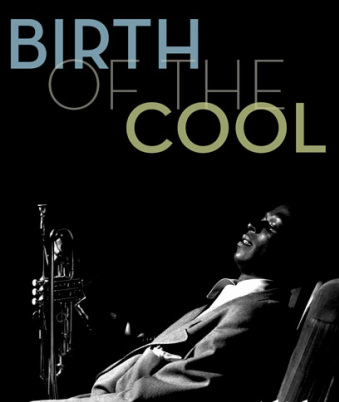East Coast cool meets Brazilian Bossa Nova—Antonio Carlos Jobim and Gerry Mulligan in an informal setting at Mulligan’s New York apartment. Gerry Mulligan was “The” baritone sax player for virtually the whole of his musical career. Some of which was no doubt due to the limited number of individuals playing the bulky instrument. He was an adventurous and innovative player, bandleader, arranger and composer. He was also a seminal figure in one of jazz’s shining moments, “The birth of the cool”. The Miles Davis sessions that took the heat of Be-Bop and shifted the focus from the blistering tempos and virtuosity that were the music's hallmarks, taking a more lyrical approach, something that exemplified Miles’ music throughout his career.
Mulligan wrote and arranged three of the pieces on the influential session, “Jeru”, “Rocker” and “Venus De Milo”, arranging three others as well. His baritone sax was a core part of the band’s sound, and his lighter, breathier approach was a departure from the more traditional sound of players like Harry Carny, the influential longtime mainstay of Duke Ellington’s band.
He was one of the first horn players to perform in a piano-less trio, a risky move that opened things up harmonically, enabling greater melodic freedom for the soloist, but, it also demanded a much higher level of interplay between the remaining players. Without a piano or guitar to lay down the chords it would be easier for the soloist to get lost, it likewise placed greater demand on the bass player to fill in the gaps, and it was more challenging for the audience as well.
He formed a band with trumpeter/singer/ Chet Baker, a sort of super group of the West Coast Jazz scene, which became the cool, California equivalent of some of the best bands on hard Bop scene in New York.
Antonio Carlos Jobim, the other half of this duo, was a composer, guitarist, pianist and arranger. His songs; “Desifinado”, “Corcovada”, “Dindi”, “The Girl from Impanema”, “One note samba”, “How Insenstive”, “Meditation” and “Wave”, to name just a few, created a global phenomenon. His blend of lyrical melody and jazz harmony, melded to Afro/Brazilian rhythms crossed virtually every age, racial and ethnic boundary, selling millions of records in the process.
Jobim wasn't solely responsible for creating bossa nova, but, he wrote a good deal of the music's primary repertoire and shaped its sound in a way that has few parallels in modern music. His influence on jazz musicians alone would signal him as a creative force equal to many of the traditions most important figures.
The clip here is of Jobim and Mulligan in Gerry’s apartment, with Jobim on piano and Mulligan on clarinet, instead of the usual baritone sax. The clarinet offered a subtler sound befitting the music’s natural lyricism. It appears to be from the late fifties or early sixties when bossa nova was at its peek.
Gerry’s work as an arranger influenced Jobim—and Jobim’s music in turn influenced Mulligan. You can hear Gerry trying to negotiate the unique rhythms and syncopation that are part of Jobim's composition, “One note samba”—giving us a window into the private world of musicians, and the kinds of intimate conversations had between diverse musical compatriots that are seldom seen by an audience.
Mark Magula
He was one of the first horn players to perform in a piano-less trio, a risky move that opened things up harmonically, enabling greater melodic freedom for the soloist, but, it also demanded a much higher level of interplay between the remaining players. Without a piano or guitar to lay down the chords it would be easier for the soloist to get lost, it likewise placed greater demand on the bass player to fill in the gaps, and it was more challenging for the audience as well.
He formed a band with trumpeter/singer/ Chet Baker, a sort of super group of the West Coast Jazz scene, which became the cool, California equivalent of some of the best bands on hard Bop scene in New York.
Antonio Carlos Jobim, the other half of this duo, was a composer, guitarist, pianist and arranger. His songs; “Desifinado”, “Corcovada”, “Dindi”, “The Girl from Impanema”, “One note samba”, “How Insenstive”, “Meditation” and “Wave”, to name just a few, created a global phenomenon. His blend of lyrical melody and jazz harmony, melded to Afro/Brazilian rhythms crossed virtually every age, racial and ethnic boundary, selling millions of records in the process.
Jobim wasn't solely responsible for creating bossa nova, but, he wrote a good deal of the music's primary repertoire and shaped its sound in a way that has few parallels in modern music. His influence on jazz musicians alone would signal him as a creative force equal to many of the traditions most important figures.
The clip here is of Jobim and Mulligan in Gerry’s apartment, with Jobim on piano and Mulligan on clarinet, instead of the usual baritone sax. The clarinet offered a subtler sound befitting the music’s natural lyricism. It appears to be from the late fifties or early sixties when bossa nova was at its peek.
Gerry’s work as an arranger influenced Jobim—and Jobim’s music in turn influenced Mulligan. You can hear Gerry trying to negotiate the unique rhythms and syncopation that are part of Jobim's composition, “One note samba”—giving us a window into the private world of musicians, and the kinds of intimate conversations had between diverse musical compatriots that are seldom seen by an audience.
Mark Magula

 RSS Feed
RSS Feed